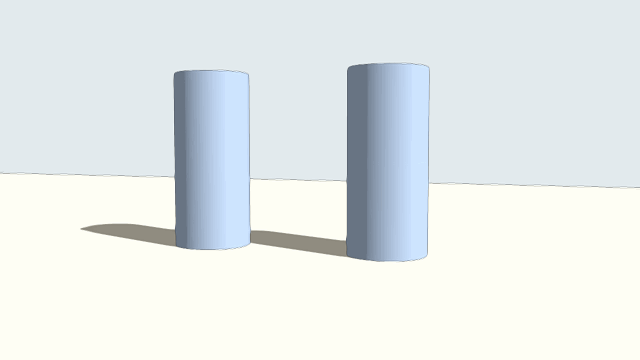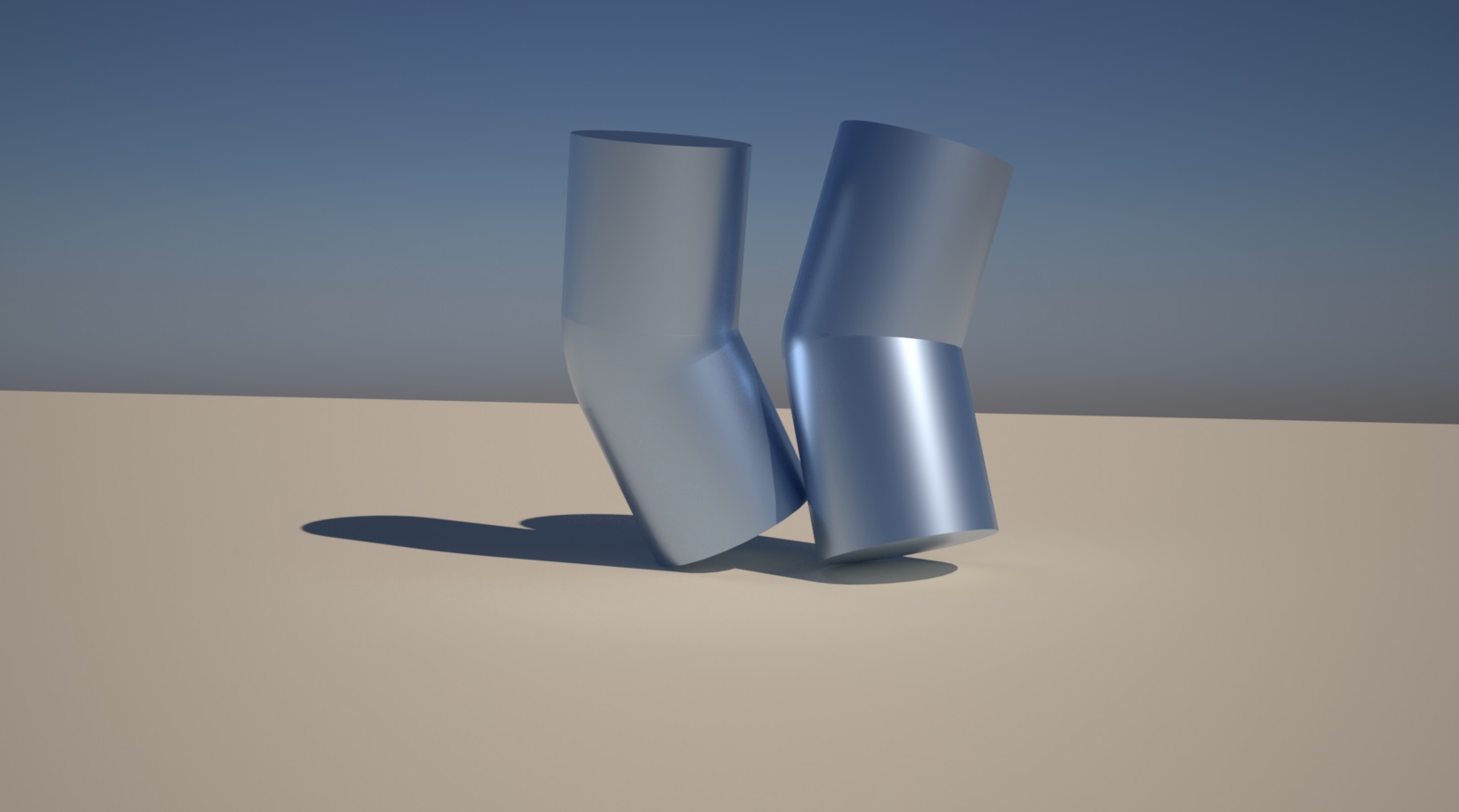Hi HornOxx, your hammers would be a good example for an animation of the march with animator (Fredo6). The threatening effect comes across quite well in your renderings. At that time I recorded the concert of Pink Floyd in Berlin from the TV to a videotape.
Those were the days...
Posts
-
RE: SubD examples and models
-
RE: Three Small Tables
Models, textures, light, rendering, presentation - perfect!
I would like to touch the loose parts and put them together....
-
RE: 3D Truss Models
Thank you for your incredible efforts to develop plug-ins for building construction solutions. Even the renderings are getting better and better. I'm thinking about whether the techniques are also suitable for the requirements of building constructions in Germany... Keep up the good work!

-
RE: MSPhysics - Experiments & Examples
I'm getting closer to the point.... In a day or two, I finally have my flexible caudal fin...

-
RE: SubD examples and models
@HornOxx:
Don't try MSPhysics as it can be addictive.... Using gravity is the beginning of the end... Devil's work! You will neglect your job and your family, ultimately become lonely, impoverished and physically stunted. And yet you can't stop and you will always want to achieve more... And you will get it...
@Box:
Thank you for the playful application and convincing demonstration of some powerful plugins for creating a seemingly simple heap of stones! The hard part, which is now easy to do...
-
RE: Grey bars!
In my case, it is caused when Indigo RT sets a different aspect ratio for rendering in the active scene (for example, for a resolution of 1920x1080 or multiples of that) and when I apply these settings to the scene.
In the viewport, the different aspect ratio is typically represented by vertical or horizontal gray bars.
SketchUp 2017 (Make) does not cope with these settings of the render program during normal image export from the same scene and produces grey areas of different widths depending on the image resolution. Up to version SketchUp 2016 (Pro) this was no problem for me.
I use version 2016 Pro for work and 2017 Make for hobby (Animation, because MSPhysics only runs with 64-bit SketchUp).
Indigo RT (plugin "Skindigo") has in the menu "Skindigo Render Settings" a "Reset Camera" button, which also fixes this problem.
"Advanced Camera Tools" are, I think, a pro feature. -
RE: PREVIEW: Television Studio / Centre
The complex looks good in terms of use, but is not very inspiring from an architectural point of view.
Involving an architect is not a bad approach. In such a big studio can blow a little more modern wind of design. -
RE: Grey bars!
It's a problem of SketchUp 2017. Please look into this post:
https://sketchucation.com/forums/viewtopic.php?f=15&t=67431 -
RE: MSPhysics 1.0.3 (16 October 2017)
Hi Anton,
Do you see a possibility that "non-collidable" set objects will be ignored by the Buoyancy Plane? -
RE: MSPhysics 1.0.3 (16 October 2017)
@Patrick: Twilight has an "Animation Editor" under "Twilight Render V2" in the extensions pull-down menu. There you can select quality, resolution, MSP Replay output etc. It could be helpful to test which scenes you include ore exclude into an animation in scene settings.
@rick149: great detailed model! Can't wait to see it in action.
-
RE: Apartment house interiors
You're one of the most extreme perfectionists I've ever seen.

A really excellent degree migration between photo- and non photorealistic representation. The steaming cup touches the i-dot on the whole thing...
I have a holiday feeling.
-
RE: MSPhysics - Experiments & Examples
Here is an animation of the sailboat on a simulated water surface in a simple SketchUp style.
A simpler solution for displaying the phases of the sail during the MSPhysics simulation is the visibility control.
All phases of the sail are grouped and are switched visible ore invisible with a scripted random function. This eliminates the need for transformations and saves data volumes in MSP Replay.
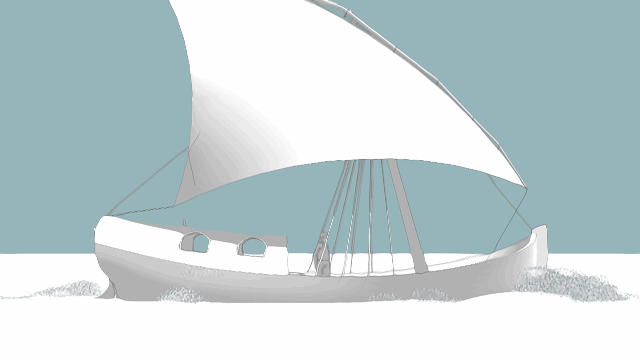
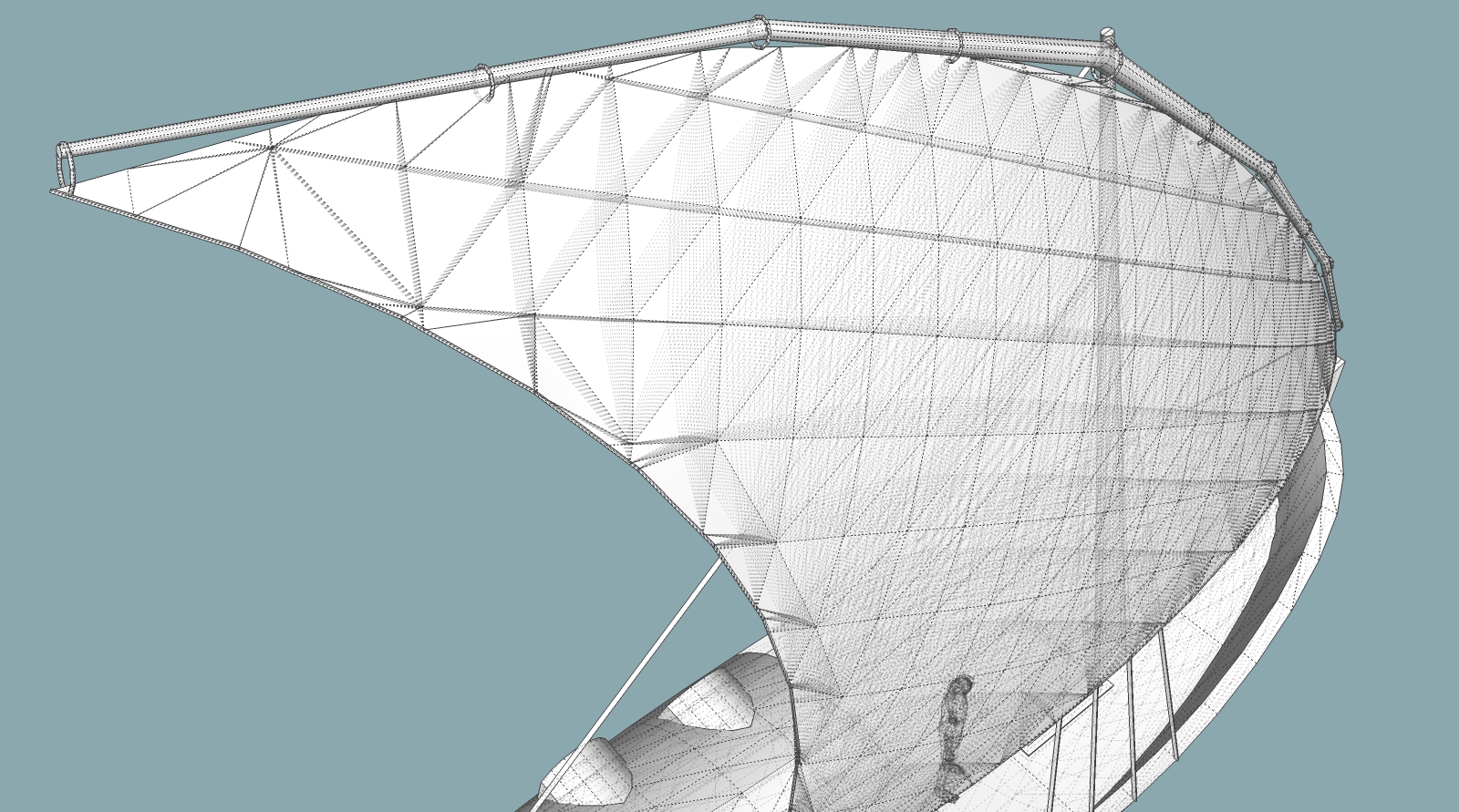
-
RE: A Traditional Workbench
Looks like your "Sketchy Shadow Experiments" were successful.
Otherwise a clean and clear presentation!
-
RE: Renovation Project
A very professional architectural approach to the existing building. A perfect visualization. But who needs the antennas at the chimney today?

-
RE: MSPhysics - Experiments & Examples
I couldn't resist... Here is another example using the same technique as above.
For the intermediate phases of the sail I used the ingenious plugin "Soap Skin & Bubble".
The ship sailed from the 3D warehouse to me...

-
RE: SubD examples and models
Again a very nice illustration! The virtual representation makes me want to play the game "brett"-hard and real again.
-
RE: MSPhysics - Experiments & Examples
Thank you, men!
@Duane Kemp: Yes, modelling the intermediate forms of the joint is quite complex, since the oscillation runs sinusoidal and the angles to the respective end positions become smaller.
The automatic generation of the intermediate shapes of the joint depending on the oscillations (frequency, angle, power of the bend, reduction ratio, external influences (impacts) etc. would be ingenious. I'm a long way from that.
@Pixero: Thanks for the link to the Ruby examples! They are from the book "Automatic SketchUp - Creating 3-D Models in Ruby" by Matthew Scarpino, 2010. I have the PDF but not the Ruby files. So now I must not transform them myself.
-
RE: MSPhysics tests and questions
Hello Anton, here an other little question:
When I let run "Replay" with active hidden geometry all emitted objects remain in there last position still after there lifetime. Is this normal? Could that explain why Twilight takes longer and longer to render the images during the simulation?
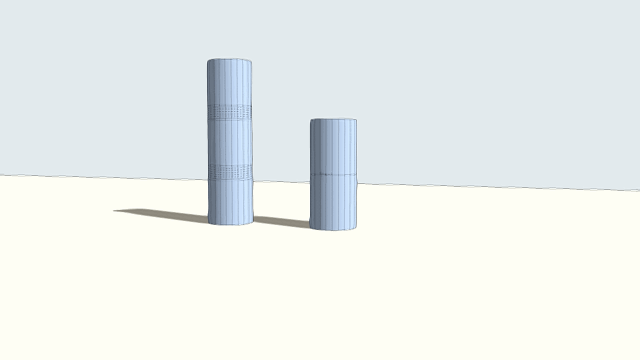
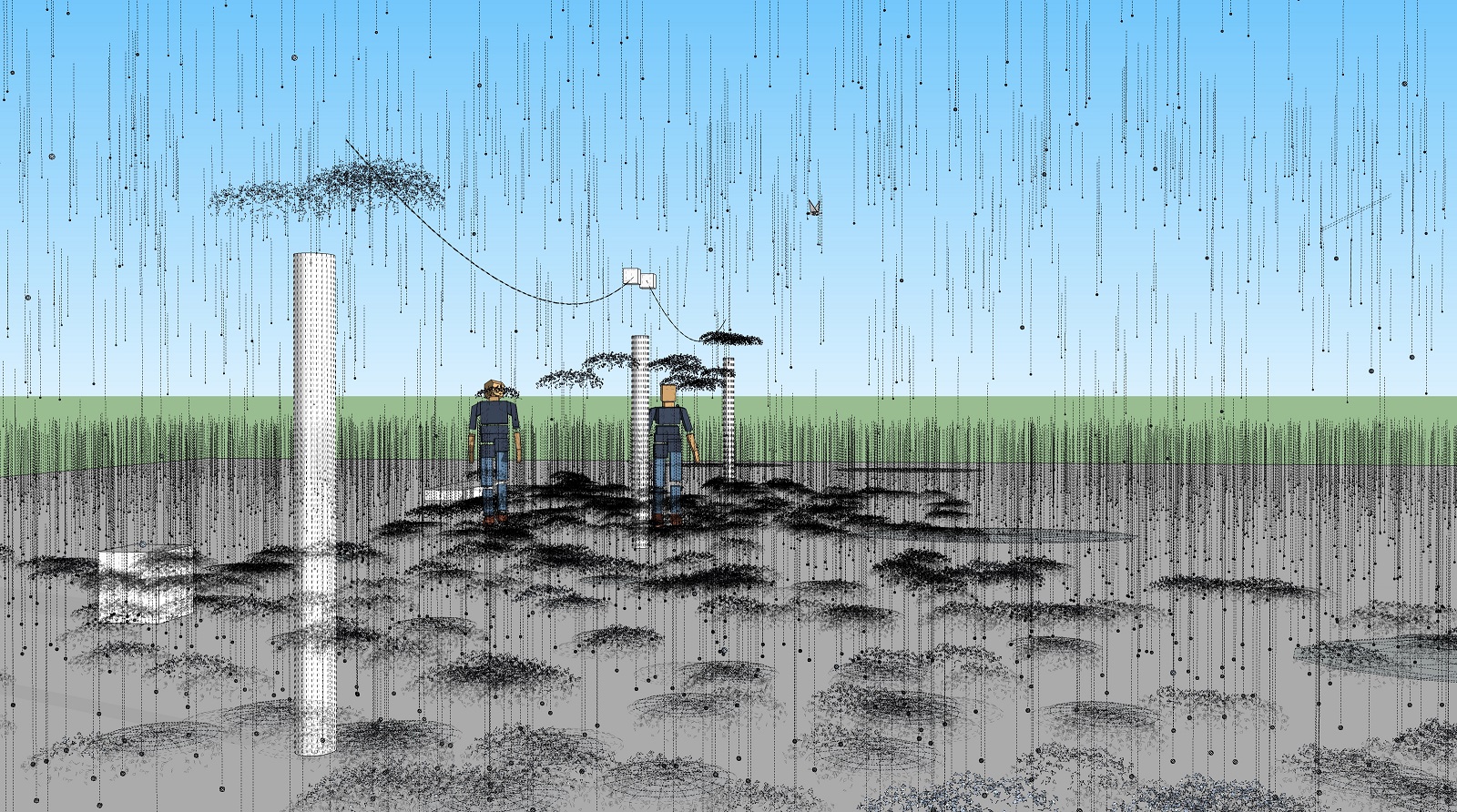
-
RE: MSPhysics tests and questions
The next step is to find a solution to bridge the gaps that arise between the moving parts of the objects at the pivot points.
I think of flexible triangular or square surfaces, which I can clamp between the boundary lines of the moving parts. For this I have to immerse deeper into the Ruby programming of SketchUp geometry ...
If someone from the experts has ideas, I would be very happy.

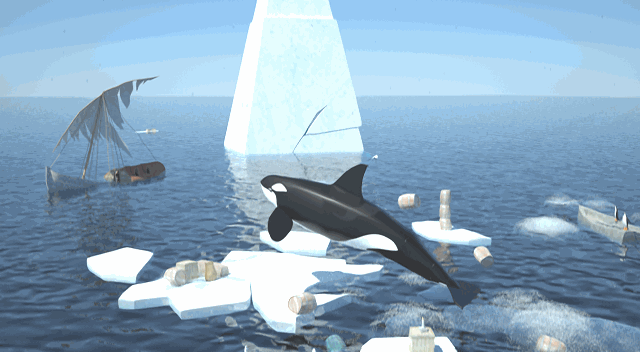
-
MSPhysics - Experiments & Examples
Here is an attempt to simulate flexible joints in MSPysics.
This are not flexible surfaces.
The right one is a kind of simple ball joint. The left one is realized by a series of sub objects which are transformed into the respective position.
The deception is only successful under certain ideal conditions, such as adherence to a given frequency, low influence of centrifugal forces, shocks or vibrations.
It would of course be better to have a flexible surface that adapts to the parts to be joined according to given conditions (e. g. straight or curved).
Here my programming attempts to influence the surfaces of a group or a component during a physics simulation fail. Purely manipulated lines or surfaces are not saved during a simulation and are not recognized by "Replay".
At present, only this replacement solution for flexible objects remains to have a renderable simulation in MSPhysics.
